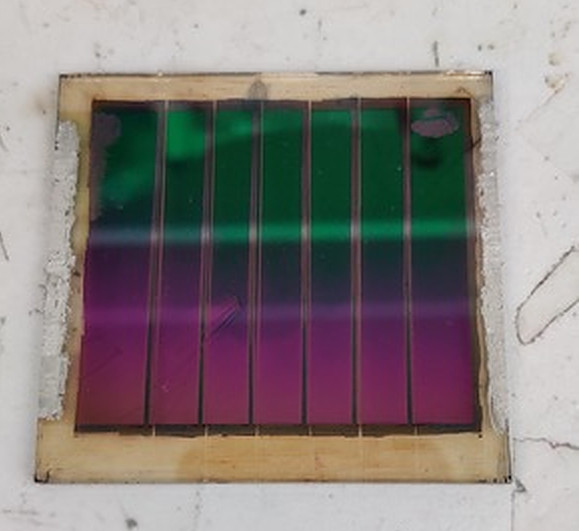An international research group has fabricated a semi-transparent perovskite solar cell that is claimed to show an improved open-circuit voltage and fill factor thanks to plasmonic enhancement. This technique consists of enhancing the cell's electromagnetic field through metal nanostructures, which in turn improves the device's low optical absorption in the visible spectrum.
“The cell was conceived for applications in building-integrated photovoltaics (BIPV) but it also can be considered for cars and smart glasses,” the research's corresponding author, Lioz Etgar, told pv magazine.
The device was built with an ultra-thin, semi-transparent, triple-cation perovskite film and gold nanorods (Au NRs) that are able to produce strong resonance peaks near the bandgap of the perovskite. “The longer wavelength absorption is commonly compensated in a very thin perovskite film; thus, having plasmonic resonance around these wavelengths should help reduce it,” the research group explained. “The synthesis of Au NRs includes capping, using protection layers to stabilize Au from agglomeration.”
The scientists bought the organic cations from Australian manufacturer GreatCell solar, the lead compounds were purchased from German provider TCI, and the spiro chemicals – with 99.9% purity – and other compounds came from Germany-based Sigma-Aldrich. “The Au NR synthesis was conducted based on the seed-mediated method in an aqueous solution using cetyltrimethylammonium bromide (CTAB) as the ligands,” they stated. “In order to use the Au NRs on top of the perovskite film, it is essential to transfer them to a suitable organic solvent that does not harm the perovskite. Therefore, the Au NRs were transferred to organic medium using tetraoctylamonium bromide (TOAB), which functions as the ligand.”
Through this Au NR post-deposition treatment on the perovskite film, the researchers were able to optimize its morphology without significant changes in the grain size. They also achieved a thickness of only 200nm for the film, which compares to around 500-700nm in typical high-efficiency perovskite films. “The Au NR treatment improves the perovskite/hole-transporting material (HTM) interface by passivating defects at this interface, which results in better charge transport and reduction of charge accumulation,” they emphasized.
The cell achieved a power conversion efficiency of 13.7%, an open-circuit voltage of 1,097.1mV, a short-circuit current of 17.11mA/cm2, and a fill factor of 73.12%. The device also showed an average visible transmittance (AVT) of around 27% and enhanced stability over 1,000h.
The cell was presented in the paper “Semitransparent Perovskite Solar Cells with > 13% Efficiency and 27% Transparency Using Plasmonic Au Nanorods,” published in ACS Publications. The research team includes scientists from the Hebrew University of Jerusalem, in Israel, and the Nanyang Technological University (NTU Singapore), in Singapore. “We are currently in negotiations to establish a spin-off company for the production of semi-transparent perovskite cells for BIPV,” Etgar stated.
This content is protected by copyright and may not be reused. If you want to cooperate with us and would like to reuse some of our content, please contact: editors@pv-magazine.com.




4 comments
By submitting this form you agree to pv magazine using your data for the purposes of publishing your comment.
Your personal data will only be disclosed or otherwise transmitted to third parties for the purposes of spam filtering or if this is necessary for technical maintenance of the website. Any other transfer to third parties will not take place unless this is justified on the basis of applicable data protection regulations or if pv magazine is legally obliged to do so.
You may revoke this consent at any time with effect for the future, in which case your personal data will be deleted immediately. Otherwise, your data will be deleted if pv magazine has processed your request or the purpose of data storage is fulfilled.
Further information on data privacy can be found in our Data Protection Policy.